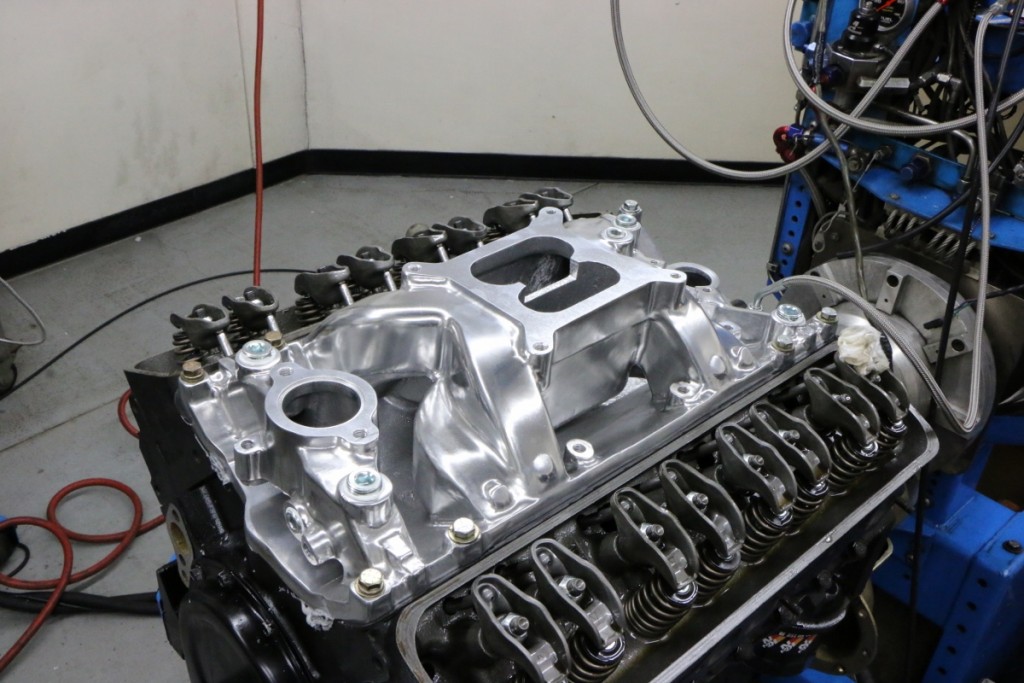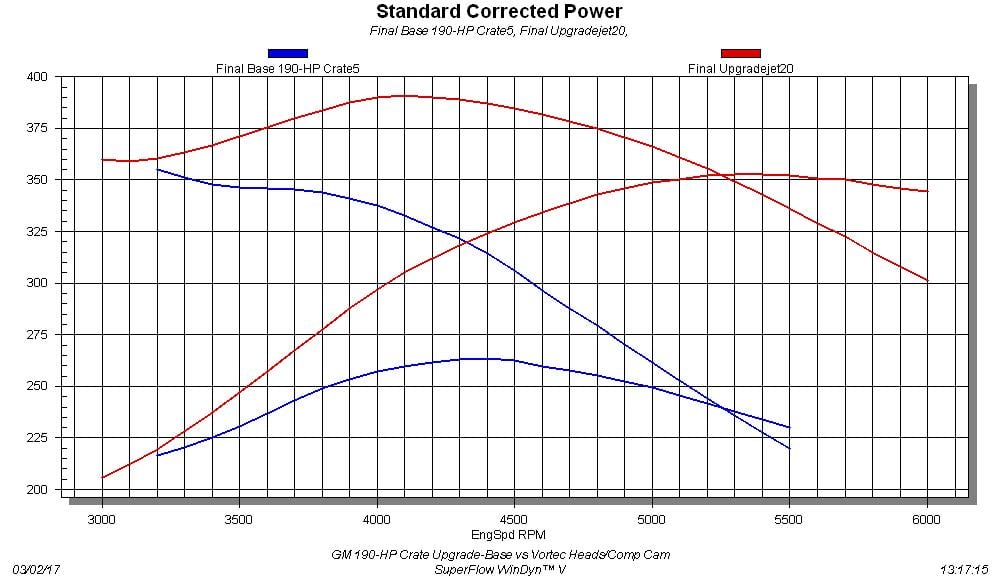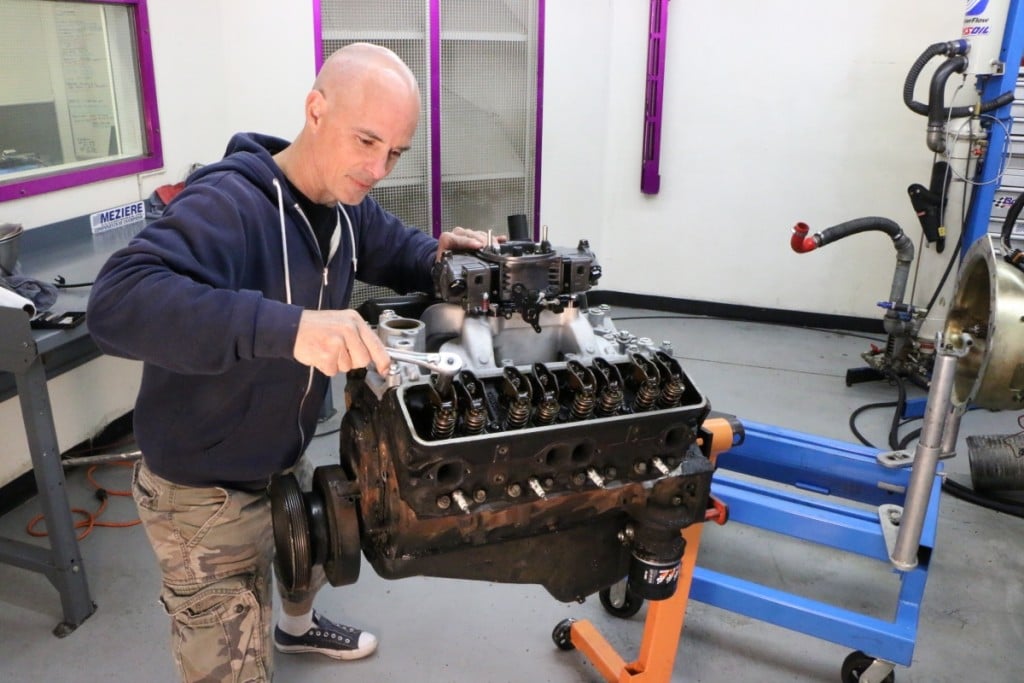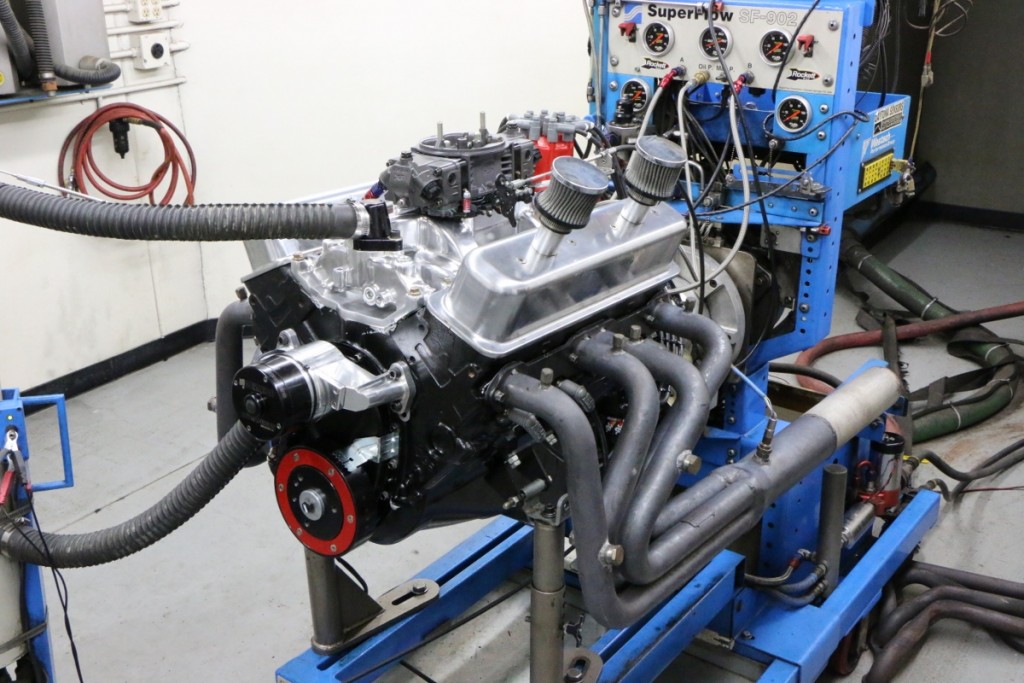Words and Photos By Richard Holdener
What’s not to love about small-block Chevy crate motors, especially when they come straight from the guys who invented the little mouse motor? If there is someone who knows a thing or two about building the small-block Chevy correctly, it would have to be GM, right? I mean they have built literally millions of small-blocks since its introduction. By now, all of the kinks have been worked out, and you can install and run one with the confidence of knowing it will flat out work. I mean that’s why you buy a crate motor in the first place, right?
The last thing you want is to install a motor and find out it has an oil leak, bad cam, or incorrect piston to valve clearance. Crate motors have become very popular for these reasons, as they can be installed with confidence the combination is dialed in and ready to rock. The crate motor is a known quantity, and with a small-block straight from GM, it is a known quality as well, but what happens if you want something, you know, a little more?
Suppose you installed a crate motor in your daily driver, street machine, or street rod only to discover (even down the line) you would like a little more power. This is a common occurrence, as once we sample the power for a period of time, we start longing for more. I mean more is always better, right? Regardless of the reason, suppose (like most of us), you are just not satisfied with the current level of performance and look to step it up some. As always, cost is usually the determining factor, as who among us has an unlimited budget to start making mods to their motor? We’d all love to build a dedicated stroker, add a supercharger, then top it off with a sophisticated electronic fuel injection, but our meager beer budget might limit such extravagance. Fear not, as it is possible to dramatically increase the power output of a GM crate motor (or any stock small-block for that matter) without breaking the bank.
To illustrate the power gains offered by updating a crate motor, we started the adventure with the most bare bones, affordable offering from GM. Listed by GM, the 190-hp 350 crate motor (Part#10067353) was designed as a replacement for factory 1973-85 350 small-blocks. Not surprisingly given the minimal cost, the crate long block lacked any semblance of exotic hardware, and instead relied on tried-and-true iron heads, 8.5:1 compression, and a mild, hydraulic flat-tappet cam profile.
We liked the fact the small-block featured a 4-bolt main block. The added strength is unnecessary at the current, or even modified, power levels, but was good insurance for things like future power adders. This crate motor was designed by GM as a replacement for the LU5 TBI 350, so the cam timing was purposely mild, but believe us when we say the combination produced considerably more than the 190-hp rating. According to the supplied literature, these crate combos have been dyno tested with a dual-plane intake, four-barrel carb, and long tube headers. So equipped, the power output climbed to more than 260 hp, a number we found to be spot on in our testing.
Before running on the dyno, the crate motor required a few components, including the induction system, exhaust, and a damper. For the baseline test, we relied on a GM dual-plane intake, Holley 650 XP carburetor (though a Q-Jet would certainly suffice here), and 1 ¾-inch dyno headers. Additional components installed on the crate motor included a Speedmaster damper, MSD distributor, and Meziere electric water pump. Naturally, we filled the crankcase with five quarts of Lucas oil and performed a break-in to ensure the flat-tappet cam and lifters were well acquainted.
After dialing in the air/fuel and timing curves, the crate motor responded with peak numbers of 263 hp at 4,400 rpm and 348 lb-ft of torque at 3,400 rpm. As expected, the 190-hp crate motor offered a dead-smooth idle and plenty of torque. The test also illustrates GM did their homework on the combination, as it performed exactly as advertised. With a GM crate motor, you get exactly what you pay for, but now we wanted more!
The easiest route to improved performance is to replace what we affectionately refer to as the big three, namely the heads, cam, and intake. Not that the short block, oiling or exhaust systems don’t offer power, it’s just that even greater gains are possible with cam timing and induction. To that end, we decided on a three-tiered approach that included wilder cam timing, a new set of heads, and an even better intake manifold.

The GM crate motor responded very well to the head, cam, and intake upgrade, as the power output jumped from 263 hp and 348 lb-ft of torque to 353 hp and 391 lb-ft of torque.
Starting with the cam, we selected a hydraulic flat-tappet XM270H from COMP Cams’ marine listings. This cam offered a .480/.489 lift split, a 226/236-degree duration split, and 112-degree lsa. Additional power is available with increased duration (and lift), but concerns for both drivability and piston-to-valve clearance start coming into play. Besides, this cam was a major step up from the (.383/.401, 194/202, 112) specs offered by the crate motor cam. COMP Cams also supplied new 812 lifters and 26915 beehive valve springs for the cam upgrade.
The heads supplied on the crate motor lacked both flow and compression, as they were saddled with massive 76cc combustion chambers. Our head choice cured both issues, while adhering to the low-buck intention of the upgrades. The factory Vortec heads offered by a dramatic increase in flow (over 35 cfm) while decreasing the combustion chamber down to 64cc. This resulted in an increase in static compression ratio by over one full point. Each point of compression is worth an extra 3 to 4 percent, so the Vortec heads netted a quick 10 to 12 hp (through the entire curve), even before considering the increased flow. The Vortec head upgrade was teamed with a dual-plane, high-rise Eliminator intake (designed for the Vortec head intake bolt pattern) from Speedmaster, but we retained the same Holley 650 XP carb, MSD distributor, and dyno headers.

GM 350 Crate Motor-Stock vs Upgrade
The first thing you should notice from the graph is the 190-hp GM Crate motor made a lot more than 190 hp. According to GM, this crate motor was designed to replace the LU5 TBI motor and would make closer to the 190-hp rating with the TBI induction, full accessories, exhaust, and air intake. Run as we did with a four-barrel carb, dual-plane intake, and headers, this GM crate motor produced 263 hp at 4,400 rpm and 348 lb-ft of torque at 3,400 rpm (right where GM said it would be in this configuration). After upgrading to the GM Vortec heads and COMP Cams 270 cam, the peak numbers jumped to 353 hp at 5,700 rpm and 391 lb-ft of torque at 4,100 rpm. Additional power would be available by milling the Vortec heads or adding roller rockers, but we were plenty happy with the extra 90 hp!
After installation of the stock rockers, pushrods, and center-bolt valve covers (also from Speedmaster), the GM crate motor pumped out peak numbers of 353 hp at 5,700 rpm and 391 lb-ft of torque at 4,100 rpm. This gain of 90 hp (and over 40 lb-ft of torque) shows what can happen when you properly (up)date that crate.
Sources: ARP, Arp-bolts.com; COMP Cams, compcams.com; Holley/Hooker/NOS, holley.com; MSD, Msdignition.com; Speedmaster, Speedmaster79.com.


















